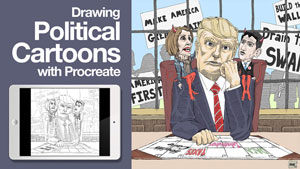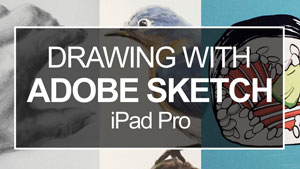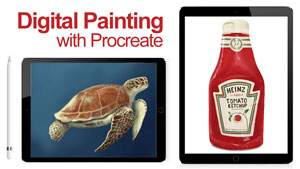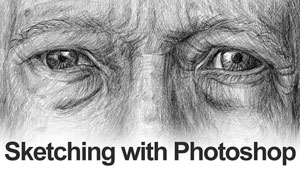Art in VR
Creating a work in virtual reality is unlike anything I have experienced before. You are entirely immersed in your creation. You can walk around it, look it at from all angles, and even go inside of it. It is a world that you have created, literally from the ground up.
Although the world within the goggles is completely “virtual”, it becomes very real when are wearing them. When the goggles are removed, you expect to turn around and see the creation behind you. The bird that I painted in VR was as tall as I am and was approximately five feet long. However, if I wished to make it smaller or expand to gigantic proportions, I could have made that happen.
Sharing Your VR Art
When we finish a painting or a drawing using traditional mediums we may hang them on a wall. We can also share digital versions, prints, or other reproductions of the work. Clearly, art made in virtual reality differs. We cannot hang this form of art on the wall and we cannot share prints. But, we can share the work that we’ve created and it can be experienced by others in ways that haven’t been possible before.
New sharing platforms are beginning emerge that allow us to experience art made in virtual reality. Some of these platforms allow you experience the art in virtual reality yourself, while others allow you to embed and share 3-Dimensional versions of your work. Google has created the site, poly.google.com, which allows you to share your work in this way. Below, you’ll see the bird that I painted, shared via Poly.
To interact with the art, click and drag with your mouse over the art to change the view. Scroll forward and backwards to zoom in and zoom out…
As an embedded interactive image, you get a better understanding of the work but it still doesn’t compare to the experience you get in VR.
One of the more interesting features of sites like Poly is that you can use the VR art created by others in your own work. (Artists have the option of making their creations available to other artists or not.) As new works are created, a library of VR creations grows and more possibilities begin to emerge.
Painting with Google Tilt Brush
Tilt Brush by Google is one of the quickly growing number of programs for creating in virtual reality. To my knowledge, it was the first introduced. Google seems to be investing a lot into this technology and the app is getting updated with new features and capabilities on a regular basis. They have since released an additional program called “Blocks”. I have not yet used this program, but when I do, I’ll share my experience.
The program was free with the purchase of the HTC Vive (the virtual reality set that I am using) but the cost is relatively modest if you need to purchase it separately (currently $19.99 on Steam).
Get the HTC Vive (Affiliate Link)
Using the program is fairly intuitive. You don’t have to be “techie” to use it. I even handed the goggles and controllers over to my 8 year old. She went straight to work and never asked a question.
The HTC Vive has two controllers. In the VR environment, one controller becomes your palette while the other one becomes the paint brush. Swiping between palettes is as easy as sliding your thumb over the sensitive pad on the controller.

One palette of brushes is designed to mimic traditional art making mediums while a second set is animated and cannot be described as “traditional”.
Some of the traditional brushes make flat marks, but in 3-Dimensional space. This takes some getting used to, but after a few minutes, you have a good understanding of how your marks will behave.

At any point, you can make changes to the environment that you are in including slight alterations to the light sources.
How VR Will Affect The Art World
We can only speculate how this new medium will affect the world of art moving forward, but we can look into the past for some indicators.
Perhaps many of you remember when digital art was brand new. Perhaps you even used Microsoft Paint to draw very simplistic images at some point in the past. Now if we “fast forward” to today, we see how quickly digital art has progressed and how far it has come in a short period of time.
Art created in VR is still in its “Microsoft Paint days”, but the technology is progressing very rapidly. In a few years, the level of realism that an artist can create in VR may be staggering.
Sure, this form of art may not hang on a wall, but it does open the possibilities for incredible installations that viewers and patrons can experience in new and exciting ways. Imagine walking right into a digital painting and experiencing it on a scale that has never before been possible.
What Would Leonardo Do?
This medium allows us to create and experience art in a new way. It is not a competition between old mediums and new mediums and I think that this is something to strongly consider.
It seems that there is a level of dissension among some traditional artists when it comes to art produced in a digital medium. Some folks are resistant to change and new processes and technologies. I can understand this to some degree. We don’t want to lose the mediums that have been used for centuries and the joy that they bring us when we create. We don’t want to lose the tactile texture of the paint, the smell of the painting, and the artifact that we can hold and touch.
I don’t see digital art as a threat to traditional mediums. Instead, I see it as something new and different. It will never replace traditional mediums and the sensory experience that comes from its creation. There’s plenty of room in the art world for new mediums like this.
When a new medium or process is introduced, I often ask myself, “What would Leonardo do with this?”
In this case, I have no doubt that Leonardo da Vinci would have embraced the new technologies available to us today and would have created amazing things with them.
We have what Leonardo didn’t have and these opportunities should not be wasted. No, there’s no better time to be alive as a creator. We can paint, draw, and sculpt with brushes, pencils, and clay AND we can paint, draw, and sculpt using computers, tablets, and virtual reality.
If so, join over 36,000 others that receive our newsletter with new drawing and painting lessons. Plus, check out three of our course videos and ebooks for free.





